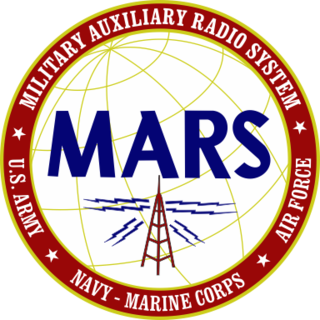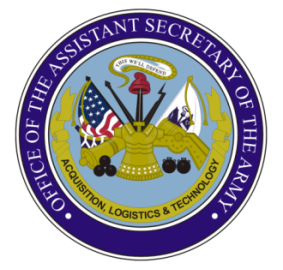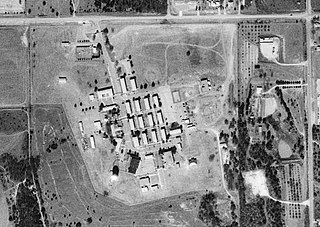
The Secretary of War was a member of the United States President's Cabinet, beginning with George Washington's administration. A similar position, called either "Secretary at War" or "Secretary of War", had been appointed to serve the Congress of the Confederation under the Articles of Confederation between 1781 and 1789. Benjamin Lincoln and later Henry Knox held the position. When Washington was inaugurated as the first president under the Constitution, he appointed Knox to continue serving as Secretary of War.

The Secretary of the Navy is a statutory officer and the head of the Department of the Navy, a military department within the Department of Defense of the United States of America.

The Defense Information Systems Agency (DISA), known as the Defense Communications Agency (DCA) until 1991, is a United States Department of Defense (DoD) combat support agency composed of military, federal civilians, and contractors. DISA provides information technology (IT) and communications support to the President, Vice President, Secretary of Defense, the military services, the combatant commands, and any individual or system contributing to the defense of the United States.

The Joint Chiefs of Staff (JCS) is a body of senior uniformed leaders in the United States Department of Defense which advises the president of the United States, the secretary of defense, the Homeland Security Council and the National Security Council on military matters. The composition of the Joint Chiefs of Staff is defined by statute and consists of the chairman of the Joint Chiefs of Staff (CJCS), vice chairman of the Joint Chiefs of Staff (VCJCS), the military service chiefs from the Army, Marine Corps, Navy, and Air Force, and the chief of the National Guard Bureau, all appointed by the president following Senate confirmation. Each of the individual military service chiefs, outside their Joint Chiefs of Staff obligations, works directly for the secretary of the military department concerned, i.e., secretary of the Army, secretary of the Navy, and the secretary of the Air Force.

The Raytheon Company is a major U.S. defense contractor and industrial corporation with core manufacturing concentrations in weapons and military and commercial electronics. It was previously involved in corporate and special-mission aircraft until early 2007. Raytheon is the world's largest producer of guided missiles. On June 9, 2019, Raytheon announced a merger of equals with the aerospace companies of United Technologies.

The secretary of the Army is a senior civilian official within the Department of Defense of the United States with statutory responsibility for all matters relating to the United States Army: manpower, personnel, reserve affairs, installations, environmental issues, weapons systems and equipment acquisition, communications, and financial management.

Thomas Sovereign Gates Jr. was United States Secretary of Defense from 1959 to 1961 under President Eisenhower. He was promoted from deputy secretary of defense. During his tenure, he established a task force to set nuclear target priorities. He also authorized U-2 reconnaissance flights, including the flight of Francis Gary Powers.

Bobby Ray Inman is a retired United States Navy admiral who held several influential positions in the United States Intelligence Community.
The Joint Electronics Type Designation System (JETDS), which was previously known as the Joint Army-Navy Nomenclature System and the Joint Communications-Electronics Nomenclature System, is a method developed by the U.S. War Department during World War II for assigning an unclassified designator to electronic equipment. In 1957, the JETDS was formalized in MIL-STD-196.

Francis Joseph Harvey served as the 19th Secretary of the United States Army from November 19, 2004 to March 9, 2007.

The Air Staff is one of the Department of the Air Force's two statutorily designated headquarters staffs: the other staff is the Office of the Secretary of the Air Force, also known as the Secretariat. The Air Staff is headed by the Chief of Staff of the Air Force. The Air Staff is primarily composed of uniformed U.S. Air Force officials who assist the Chief of Staff in carrying out his dual-hatted role: as the principal military advisor to the Secretary of the Air Force, and as a member of the Joint Chiefs of Staff.

The Military Auxiliary Radio System (MARS) is a United States Department of Defense sponsored program, established as a separately managed and operated program by the United States Army, and the United States Air Force. The United States Navy-Marine program has been closed. The program is a civilian auxiliary consisting primarily of licensed amateur radio operators who are interested in assisting the military with communications on a local, national, and international basis as an adjunct to normal communications. The MARS programs also include active duty, reserve, and National Guard units; Navy, Marine Corps, and National Oceanic and Atmospheric Administration ships, and Coast Guard cutters and shore stations.

Donald Aubrey Quarles was a communications engineer, senior level executive with Bell Telephone Laboratories and Western Electric, and a top official in the United States Department of Defense during the Eisenhower Administration. He served as both Secretary of the Air Force and Deputy Secretary of Defense.
An international decoration is a military award which is not bestowed by a particular country, but rather by an international organization such as the United Nations or NATO. Such awards are normally issued as service medals, for participation in various international military operations, and not for specific acts of heroism or bravery. The first medal from an international organization accepted for wear by the United States Military was the United Nations Korea Medal in 1951. Subsequent acceptance of other United Nations Medals did not come until 1964 with Executive Order 11139. Acceptance of the medals of other international multilateral organizations finally came with Executive Order 11446 in 1969. Acceptance of these international decorations must be approved by not only the Secretary of Defense, but also the Secretary of State.

The Office of the United States Assistant Secretary of the Army for Acquisition, Logistics, and Technology is known as OASA(ALT). OASA(ALT) serves, when delegated, as the Army Acquisition Executive, the Senior Procurement Executive, the Science Advisor to the Secretary of the Army, and as the senior research and development official for the Department of the Army. The OASA(ALT) also has the principal responsibility for all Department of the Army matters related to logistics.

Oklahoma City Air Force Station is a closed Cold War United States Air Force air defense and communications-electronics headquarters and radar station. It was located 10 miles (16 km) east-southeast of Oklahoma City, Oklahoma, just to the southeast of Tinker Air Force Base. It ceased to be a separate Air Force installation on 1 October 1983, when it merged with Tinker.

Eliseo Mijares Rio Jr. is a Filipino retired brigadier general and electronics engineer who headed the Philippines' Department of Information and Communications Technology from 2017 to 2019.















